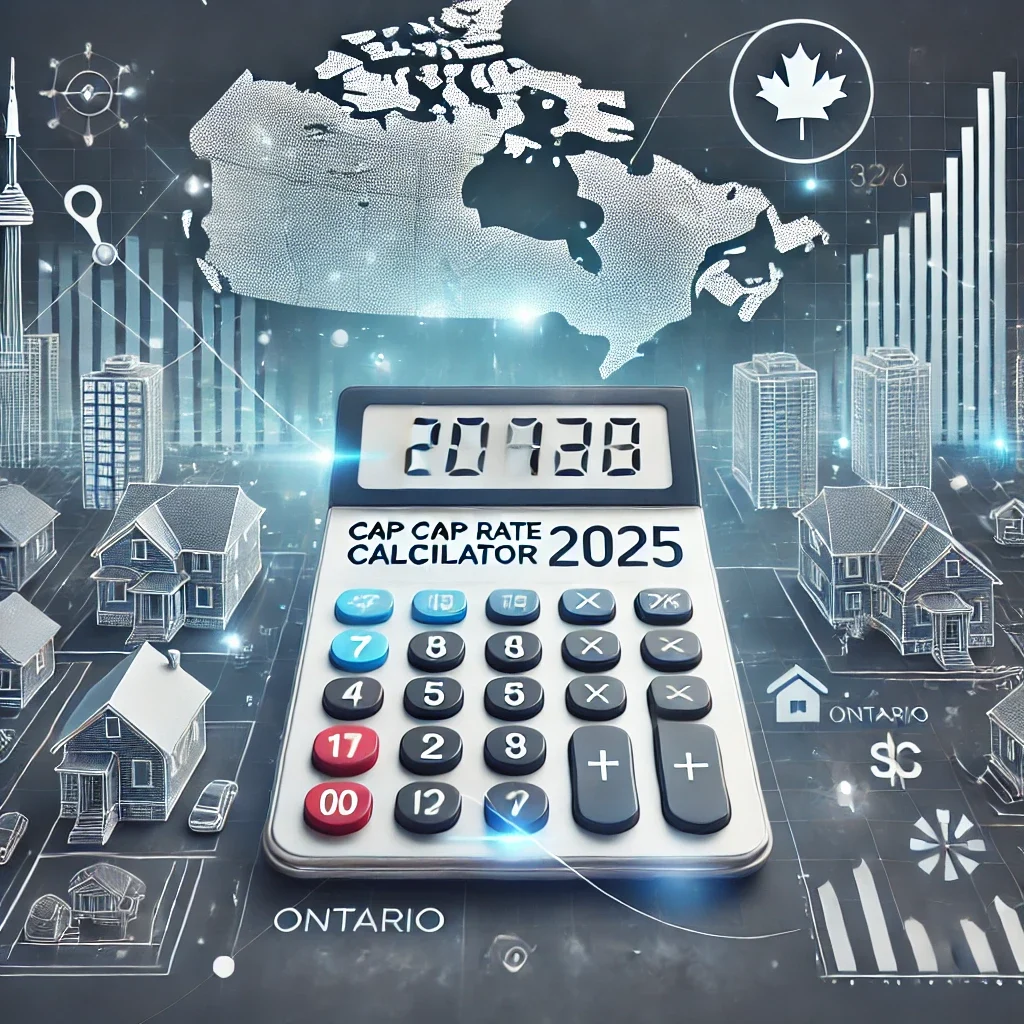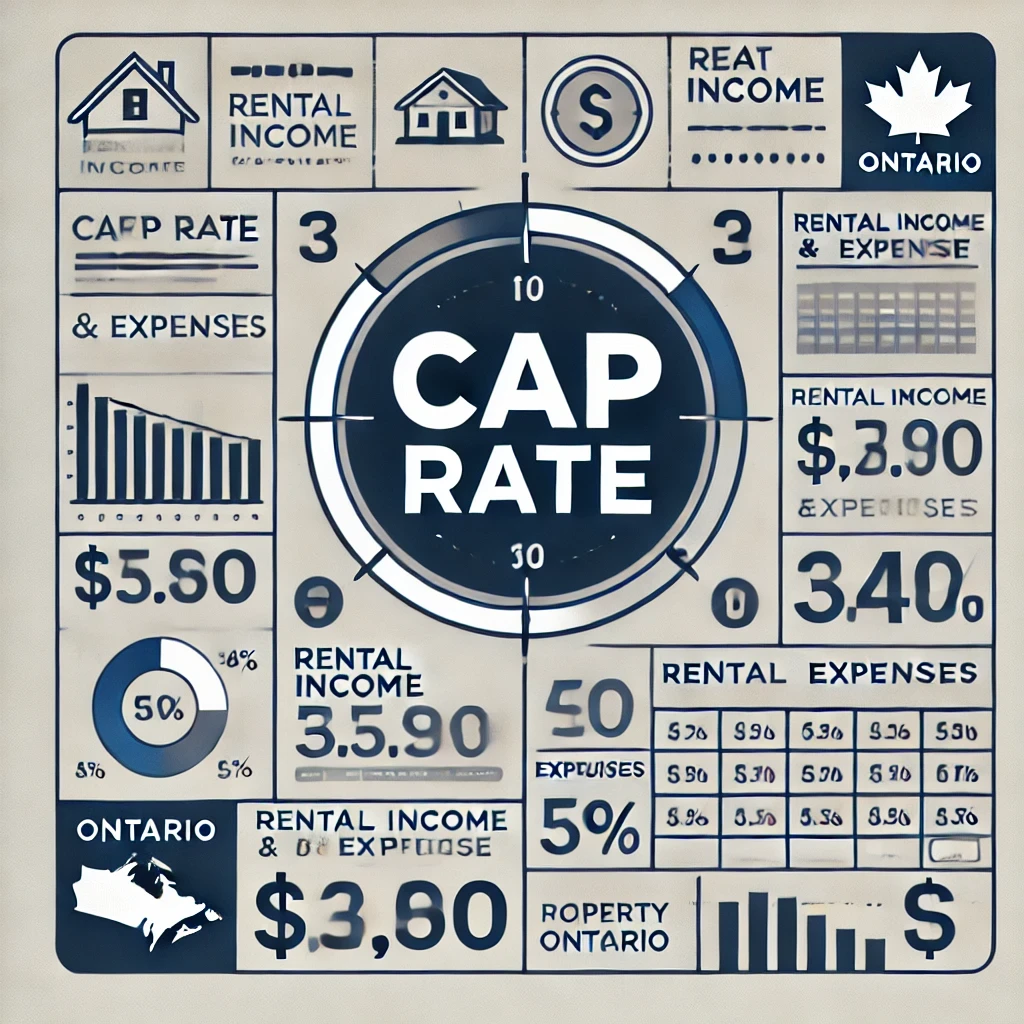Ontario Cap Rate Calculator 2025: How to Analyze Your Investment Like a Pro

In This Article:
If you’re a real estate investor in Ontario, understanding how to evaluate your property’s performance is essential. That’s where our Ontario cap rate calculator 2025 comes in.
Cap rate — short for capitalization rate — is one of the simplest, yet most powerful tools landlords and investors use to assess whether a rental property is financially worth it. And if you want to make smart, data-backed decisions this year, knowing your property’s cap rate is a great place to start.
What Is a Cap Rate?
A capitalization rate (cap rate) is a formula used to estimate the potential return on a real estate investment. It’s calculated by dividing your property’s net operating income (NOI) by the purchase price.
Cap Rate = Net Operating Income ÷ Property Value
Think of it as your property’s ROI (return on investment), expressed as a percentage. The higher the cap rate, the higher the potential return — but often, the higher the risk.
Why Do Investors Use Cap Rate?
Cap rate is popular for good reason. It’s easy to calculate and compare across multiple properties. Unlike cash flow, it ignores mortgage financing and focuses purely on the property’s performance.
- Compare properties in different cities or price brackets
- Set target returns
- Evaluate long-term rental potential
- Understand local market trends (high cap rate = riskier, low cap rate = stable)
How to Use the Ontario Cap Rate Calculator
Our free online tool makes it easy to plug in real numbers and get a clear picture of your property’s return.
Here’s what you’ll need:
- Monthly Rental Income
- Annual Insurance
- Monthly Utilities
- Maintenance Costs (% of Price)
- Monthly Property Management Fees
- Property Purchase Price
Once you input your data, you’ll instantly see:
- Total operating expenses
- Annual net income
- Your property’s cap rate
This tool helps investors make apples-to-apples comparisons, whether you’re evaluating a duplex in Belleville or a high-rise unit in downtown Toronto.

Ontario Market Comparison (2025 Example)
Let’s say you’re looking at three properties this year:
| Location | Monthly Rent | Purchase Price | Estimated Cap Rate |
|---|---|---|---|
| Belleville | $1,800 | $420,000 | 5.1% |
| Toronto | $2,300 | $750,000 | 3.2% |
| Ottawa | $2,100 | $600,000 | 4.0% |
While Toronto offers higher rents, Belleville may give you a better return. That’s the power of cap rate — it helps you cut through price tags and focus on income performance.
🧠 Want to analyze deals even deeper? Check out our guide: Real Estate Deal Analysis: Theory and Case Study
4 Cap Rate Tips for Smarter Investing
- Compare Locally – Cap rates vary widely by market. A “good” rate in Trenton might be different from one in Ottawa.
- Use Cap Rate as a Filter, Not a Final Answer – High cap rates may also mean higher tenant turnover or maintenance costs.
- Don’t Forget Expenses – Property management, insurance, and utilities can impact your NOI more than you think.
- Recalculate Annually – Markets shift, rents rise, and expenses change. Update your cap rate at least once a year.
Want to learn how professional property management affects NOI? Understanding Property Management Fees in Ontario
Try the Calculator Now
No spreadsheets, no formulas. Just plug in your numbers and see the return potential.
Our Ontario Cap Rate Calculator 2025 is:
- Free to use
- Built for real estate investors
- Based on real expense inputs
- Perfect for comparing Belleville, Trenton, Ottawa, and Toronto markets
Invest smarter. Compare better. Grow faster — with Blue Anchor.
